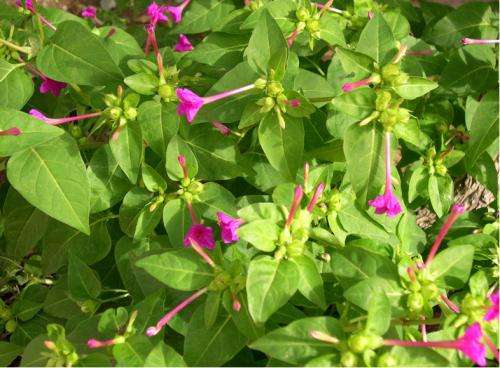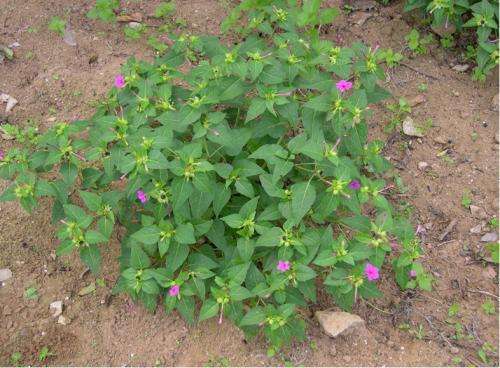January 31, 2014 report
Researchers identify amino acid change that allows pathogens to jump from one plant to another

(Phys.org) —A research team with members from the U.K., Germany and the U.S. has identified an amino acid sequence in effector proteins in two pathogens that helps explain how a firmly established pathogen can leap from one plant to another. In their paper published in the journal Science, the team describes genomic research they conducted on two types of well-known plant pathogens and what it revealed regarding effector proteins and their role in helping the pathogen jump from one plant species to another.
Understanding how plant pathogens jump from one plant to another can help prevent severe outbreaks such as the famous potato famine in Ireland back in the 19th century. Scientists suspect it as to do with evolutionary developments in effector proteins—those proteins produced by a pathogen that disable pathogen fighting proteins in the host. In this new effort, the researchers looked at two particular types of pathogens, Phytophthora infestans and Phytophthora mirabilis—they are believed to have diverged from a single parent approximately 1,200 years ago—recently enough to have left behind evidence of what caused them to go their separate ways.
P. infestans is the pathogen responsible for the potato famine. P. mirabilis on the other hand, is only able to infect a plant known as the four o'clock flower. To uncover what made the divergence possible, the researchers picked up where another team had left off back in 2010—that team had found evidence of adaptive evolution in 82 effector genes—those responsible for the creation of effector proteins. The new team looked at just one of those genes and found that the proteins that were produced by each plant—protease inhibitors—bound more strongly to proteases from their host plants than to those of the other host plant, suggesting a genetic predisposition. That explained their ability to infect one host but not another.
In taking a closer look at the effector proteins, the researchers found just one single amino acid difference in the two pathogens. Thus it appears that the divergence of the two pathogens came down to a simple evolutionary development in a single amino acid. More striking perhaps was the realization that such a small difference between pathogens can mean the difference between which types of plants can be infected—jumping to another plant generally renders the pathogen unable to infect its original host.

More information: Effector Specialization in a Lineage of the Irish Potato Famine Pathogen, Science 31 January 2014: Vol. 343 no. 6170 pp. 552-555. DOI: 10.1126/science.1246300
Abstract
Accelerated gene evolution is a hallmark of pathogen adaptation following a host jump. Here, we describe the biochemical basis of adaptation and specialization of a plant pathogen effector after its colonization of a new host. Orthologous protease inhibitor effectors from the Irish potato famine pathogen, Phytophthora infestans, and its sister species, Phytophthora mirabilis, which is responsible for infection of Mirabilis jalapa, are adapted to protease targets unique to their respective host plants. Amino acid polymorphisms in both the inhibitors and their target proteases underpin this biochemical specialization. Our results link effector specialization to diversification and speciation of this plant pathogen.
Journal information: Science
© 2014 Phys.org

















